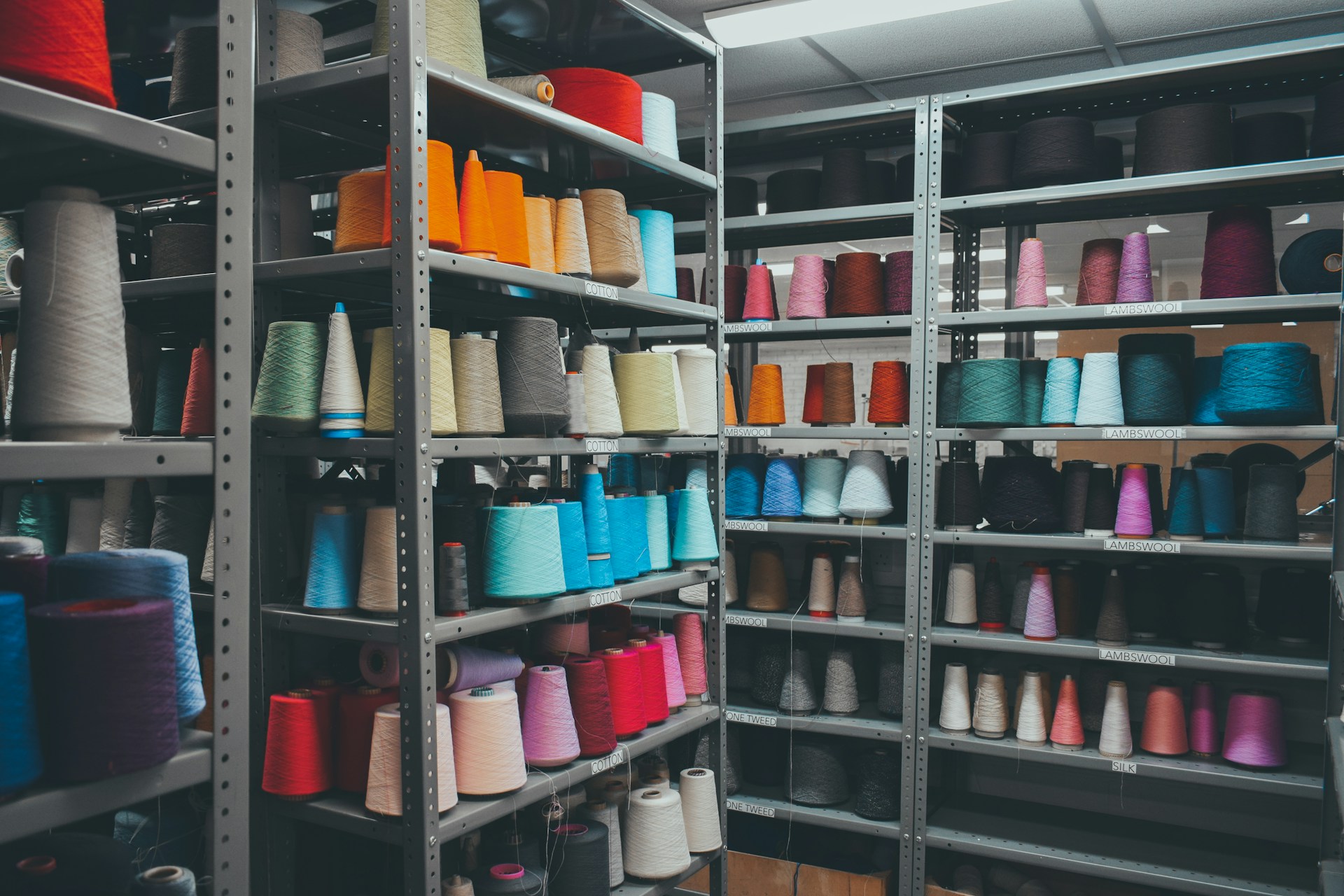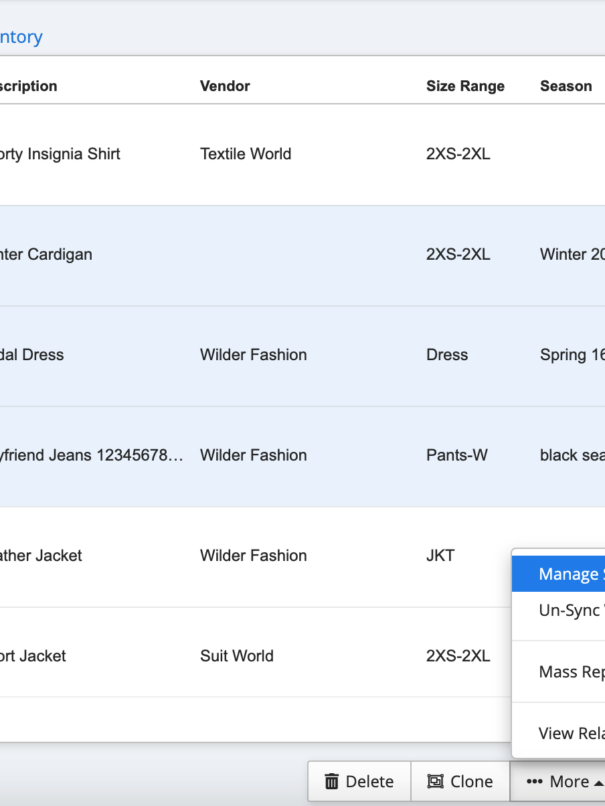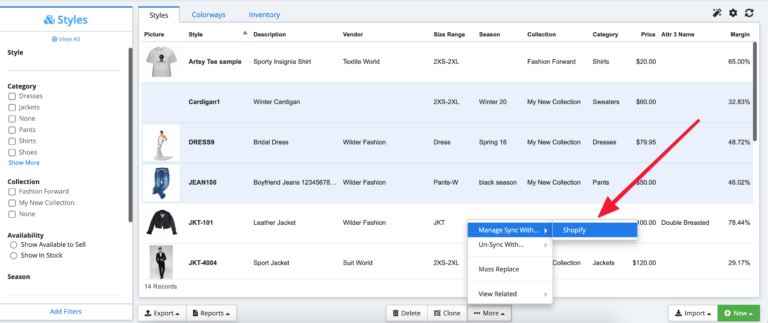Driven by consumer demand for speed, quality, sustainability, and transparency, fashion brands and manufacturers are rethinking their approach to sourcing raw materials, managing production, and distributing finished products. At the center of this revolution lies the integration of advanced Apparel Enterprise Resource Planning (ERP) systems, which are reshaping the way companies manage their supply chains, collaborate with suppliers, and respond to market trends.
This article explores how sourcing strategies in the fashion industry are evolving and examines the crucial role Apparel ERP systems play in enabling brands to stay competitive and agile in a constantly shifting market.
The Evolution of Sourcing Strategies in Fashion
1. From Traditional to Agile Sourcing
Historically, the fashion industry relied on a linear and rigid supply chain, where long lead times and large production runs were the norms. Traditional sourcing methods were built around forecasting trends months in advance, producing large quantities, and then distributing them through a hierarchical network of manufacturers, distributors, and retailers. This approach often resulted in overproduction, slow response to trends, and significant waste.
Today, however, the market demands agility. With the rise of fast fashion and the increasing importance of consumer-driven trends, brands are compelled to adopt agile sourcing strategies. These strategies emphasize flexibility, shorter production cycles, and the ability to pivot quickly based on real-time market feedback. Agile sourcing allows fashion companies to reduce inventory risks and align production more closely with consumer demand.
2. Globalization and Supply Chain Disruptions
Globalization has expanded sourcing options beyond traditional manufacturing hubs, offering brands access to a diverse range of suppliers across different regions. This expanded network not only introduces cost benefits but also provides opportunities to tap into local craftsmanship and sustainable practices. However, globalization also brings challenges. Recent global events—ranging from pandemics to geopolitical tensions—have exposed vulnerabilities in global supply chains, prompting companies to rethink their sourcing models.
In response, many brands are now adopting a dual or multi-sourcing strategy. This approach involves partnering with multiple suppliers across various regions to mitigate risks associated with over-reliance on a single market. In doing so, companies ensure continuity even when disruptions occur in one part of the world.
3. Sustainability and Ethical Sourcing
The modern consumer is increasingly aware of the environmental and ethical implications of their purchases. This shift in consumer values has led to a growing demand for sustainable and ethically sourced products. As a result, fashion brands are reassessing their supply chains to ensure that every step—from raw material procurement to production—is sustainable and socially responsible.
Sustainable sourcing strategies focus on reducing the environmental footprint by opting for eco-friendly materials, minimizing waste, and ensuring fair labor practices. Ethical sourcing also involves greater transparency, with brands providing detailed information about the origin of materials and the conditions under which they were produced. This trend has driven fashion companies to collaborate more closely with suppliers who share their commitment to sustainability.
4. Integration of Technology in Sourcing
Digital transformation is revolutionizing every aspect of the fashion industry, and sourcing is no exception. The incorporation of technology—from artificial intelligence (AI) and machine learning to big data analytics—allows companies to make more informed sourcing decisions. These technologies help predict trends, analyze supplier performance, and optimize logistics.
Modern digital tools facilitate real-time tracking of materials, improve communication between brands and suppliers, and enhance overall operational efficiency. The integration of such technology into the sourcing process not only accelerates decision-making but also fosters greater accuracy and transparency throughout the supply chain.
The Critical Role of Apparel ERP Systems
An Apparel ERP system is a comprehensive software solution tailored to meet the unique needs of the fashion industry. These systems integrate various aspects of the business—from design and production to distribution and retail—into a single platform, enabling seamless data flow and enhanced decision-making. Here’s how Apparel ERP systems are instrumental in transforming sourcing strategies:
1. Real-Time Visibility and Inventory Management
One of the most significant benefits of an Apparel ERP system is its ability to provide real-time visibility into the entire supply chain. With accurate and up-to-date information on inventory levels, production status, and supplier performance, companies can make swift and informed decisions. This transparency minimizes the risk of overproduction, stockouts, and excess inventory—a common challenge in traditional sourcing models.
Real-time tracking allows businesses to respond promptly to market changes. For example, if a particular style or fabric suddenly becomes popular, ERP systems can help identify the current stock levels and forecast the need for additional materials, ensuring that production aligns with consumer demand.
2. Enhanced Supplier Collaboration
Modern sourcing strategies rely heavily on strong partnerships with suppliers. Apparel ERP systems streamline communication and collaboration across the supply chain. By centralizing data, these systems facilitate better coordination between fashion brands, manufacturers, and suppliers. All parties have access to the same information, which minimizes errors and misunderstandings.
Moreover, ERP systems can incorporate supplier management modules that track performance, quality metrics, and delivery times. This data helps companies identify and reward high-performing suppliers while also pinpointing areas for improvement. Enhanced supplier collaboration is particularly crucial when companies adopt multi-sourcing strategies, as it ensures consistent quality and timely delivery across different regions.
3. Demand Forecasting and Data Analytics
Accurate demand forecasting is essential for agile sourcing. Apparel ERP systems leverage advanced analytics and machine learning to predict trends and consumer behavior. By analyzing historical data, current market trends, and external factors, these systems generate reliable forecasts that guide production planning and inventory management.
With better forecasting, companies can adjust their production schedules, manage lead times more effectively, and reduce waste. The ability to predict demand accurately also allows fashion brands to experiment with limited-edition collections or seasonal releases without the fear of overproduction, thereby reducing the risk of markdowns and unsold stock.
4. Streamlined Production and Quality Control
An effective ERP system integrates production planning and quality control into the sourcing process. From the initial design phase to the final product, ERP systems monitor every stage of production. This end-to-end oversight ensures that quality standards are maintained and that any issues are detected and resolved promptly.
Streamlined production processes not only improve product quality but also enhance operational efficiency. When sourcing strategies are agile, the ability to quickly adjust production schedules and maintain quality becomes paramount. ERP systems provide the necessary tools to manage these complexities, ensuring that fashion brands can meet market demands without compromising on quality.
Traceability and Sustainability Compliance
Sustainability and ethical sourcing require detailed traceability of every component within the supply chain. Apparel ERP systems are equipped with traceability features that allow companies to track the origin and journey of raw materials and finished products. This capability is invaluable for brands committed to sustainability, as it provides verifiable proof of ethical sourcing practices.
Traceability not only builds consumer trust but also helps companies comply with increasingly stringent regulatory standards. Governments and industry bodies are placing more emphasis on environmental and social governance (ESG), and having a robust ERP system in place ensures that companies can meet these requirements efficiently.
Challenges and Opportunities
Despite the clear benefits, transitioning to an agile sourcing strategy powered by Apparel ERP systems is not without challenges. Implementation can be resource-intensive and may require significant changes to existing business processes. Companies often need to invest in training their workforce, integrating legacy systems, and ensuring data accuracy across all touchpoints.
Moreover, the integration of ERP systems across a global supply chain presents its own set of complexities. Variations in regional regulations, data standards, and supplier capabilities can complicate the implementation process. However, these challenges are also opportunities for growth. Companies that successfully navigate these hurdles can reap the benefits of a more agile, efficient, and sustainable supply chain.
Opportunities abound for companies willing to invest in advanced technologies and transform their sourcing strategies. The ability to rapidly respond to market changes, coupled with enhanced supplier collaboration and real-time data analytics, positions fashion brands to thrive in a competitive environment. Furthermore, as consumer expectations continue to evolve, the demand for transparency and sustainability will only increase, making a robust ERP system an indispensable tool for long-term success.
Looking Ahead: The Future of Sourcing in Fashion
The future of sourcing in the fashion industry will likely be defined by continuous innovation and a deeper integration of technology. As trends like personalization, circular fashion, and on-demand production gain traction, sourcing strategies will need to evolve further to accommodate these new paradigms.
Apparel ERP systems will continue to play a pivotal role in this evolution. Future developments in AI and predictive analytics will enhance the ability of ERP systems to forecast trends with even greater precision. Additionally, advancements in blockchain technology could further strengthen traceability and transparency, ensuring that every step in the sourcing process is secure and verifiable.
In an era where sustainability and ethical considerations are increasingly at the forefront, fashion brands that embrace agile sourcing strategies and leverage state-of-the-art ERP systems will be well-positioned to meet consumer expectations and regulatory demands. The integration of technology not only streamlines operations but also builds a resilient supply chain capable of adapting to the ever-changing global landscape.
Conclusion
The fashion industry is at a crossroads, driven by rapid changes in consumer behavior, globalization, and technological innovation. Traditional sourcing strategies are being replaced by agile, responsive models that prioritize flexibility, sustainability, and transparency. Apparel ERP systems are at the heart of this transformation, providing the tools necessary to manage complex supply chains, enhance supplier collaboration, and drive informed decision-making.
By offering real-time visibility, robust demand forecasting, streamlined production processes, and comprehensive traceability, ERP systems empower fashion brands to navigate a competitive and volatile market. As the industry continues to evolve, companies that invest in these technologies and adopt innovative sourcing strategies will be better equipped to meet the challenges of tomorrow, ensuring long-term success in an ever-dynamic landscape.
Embracing these changes is not just a strategic necessity—it’s a pathway to building a more sustainable, ethical, and resilient fashion industry for the future.









